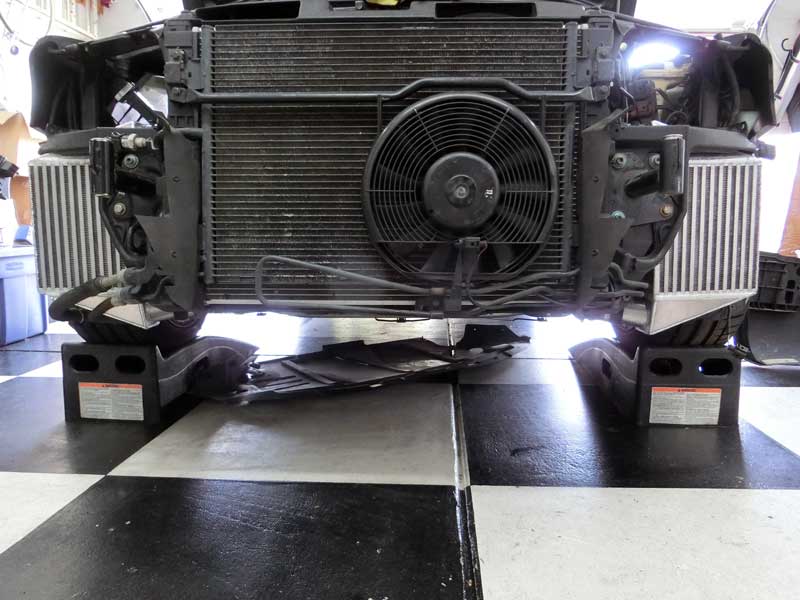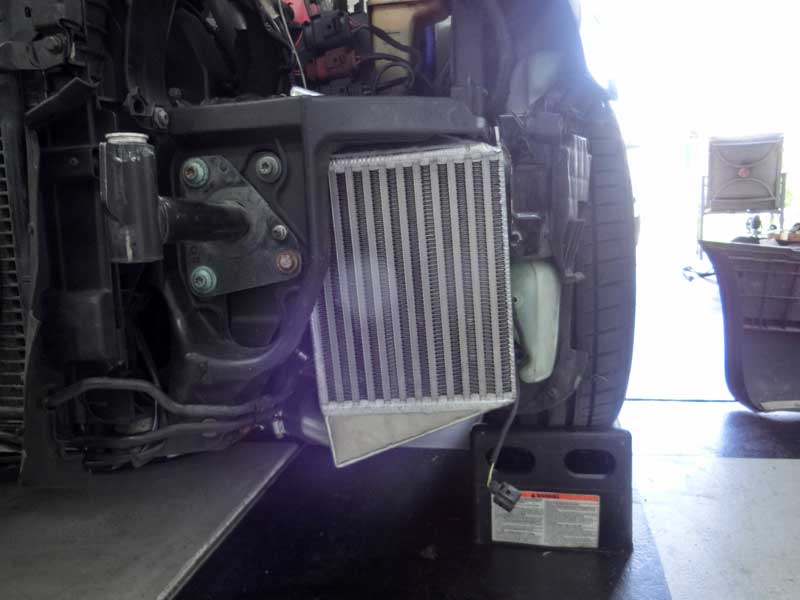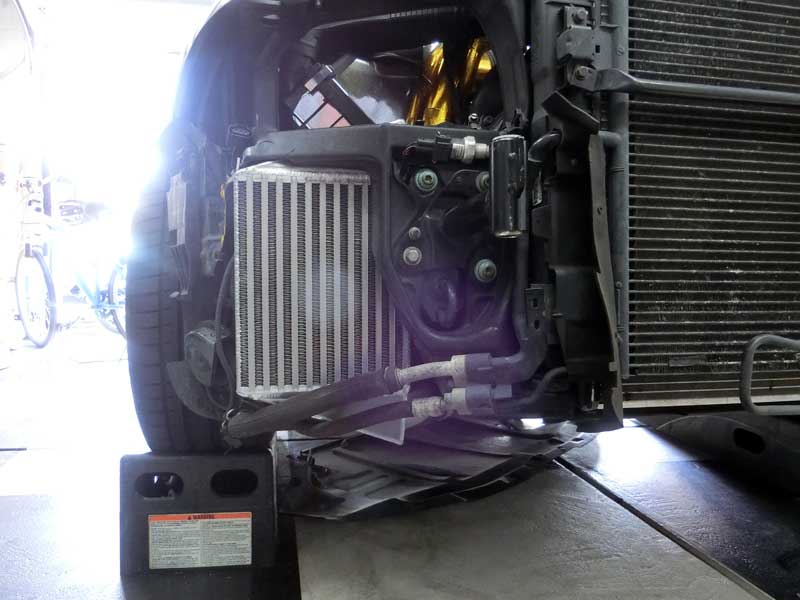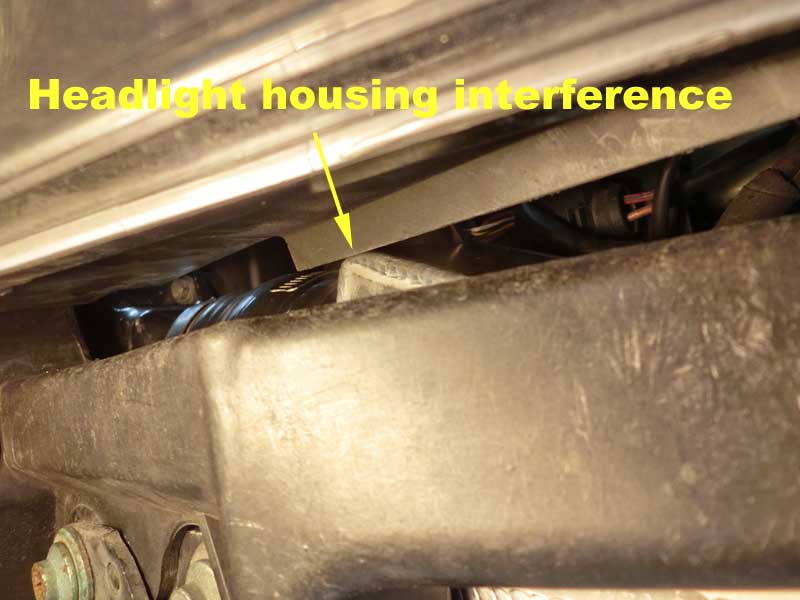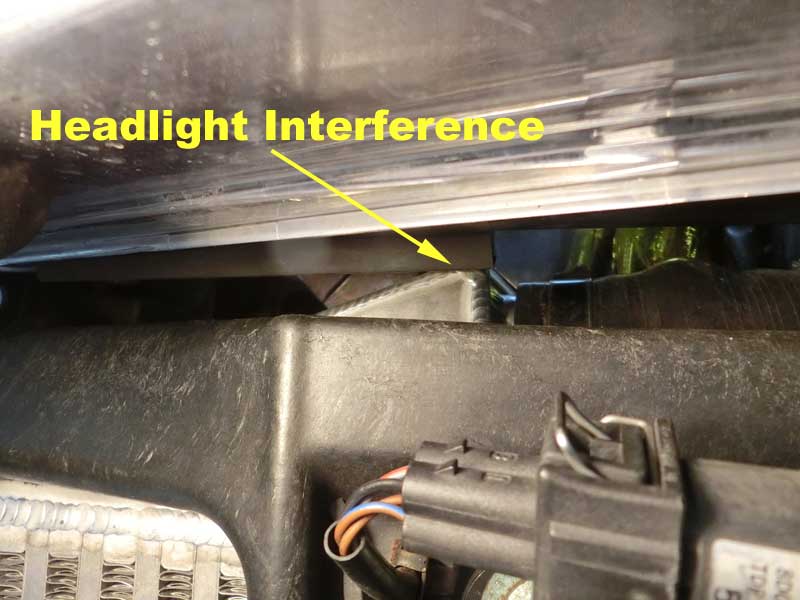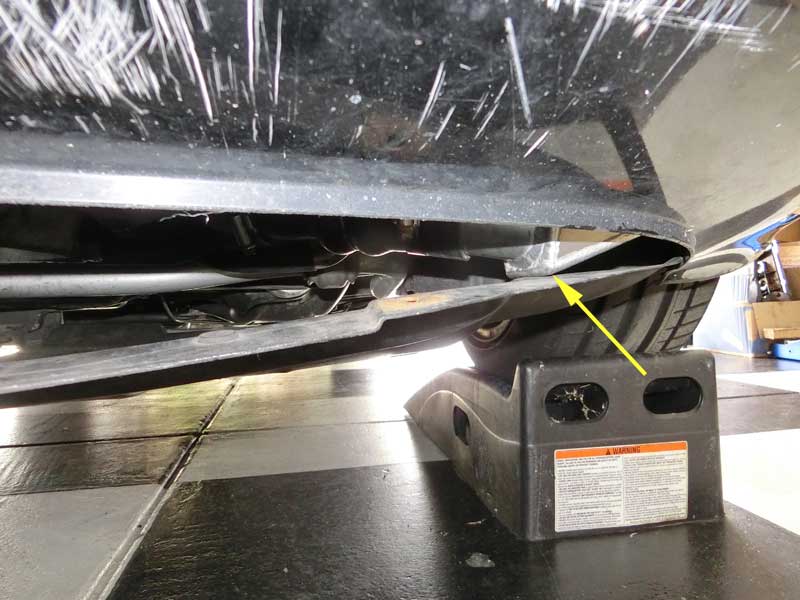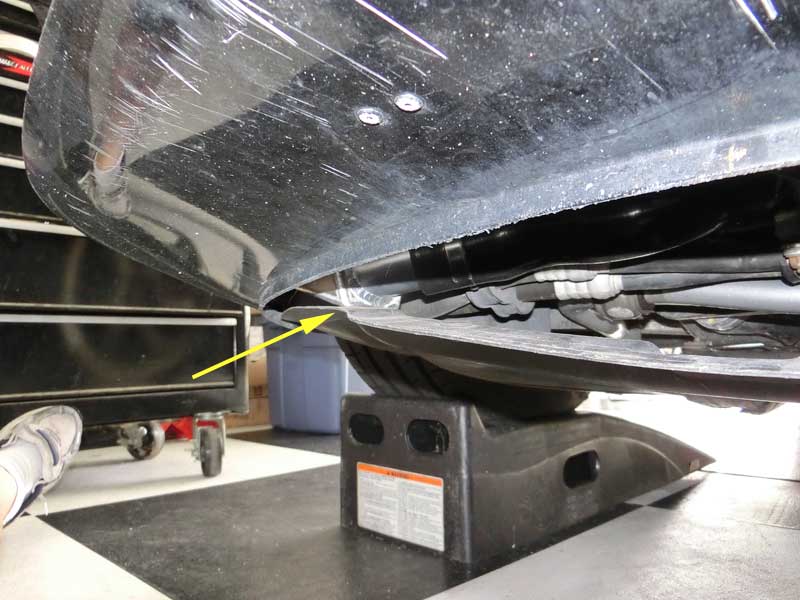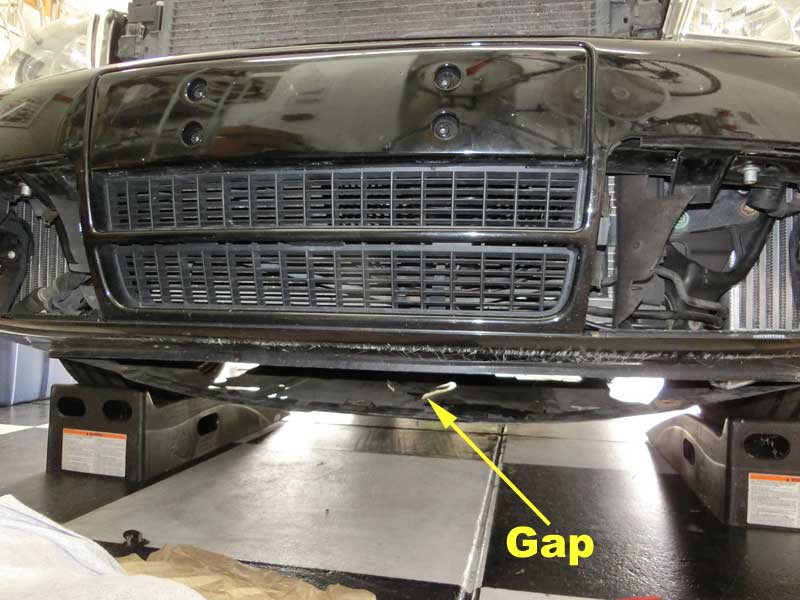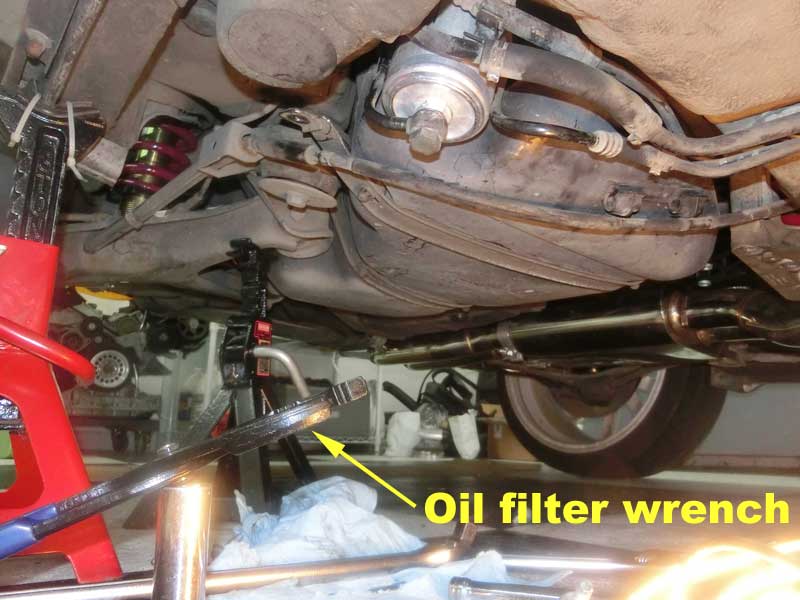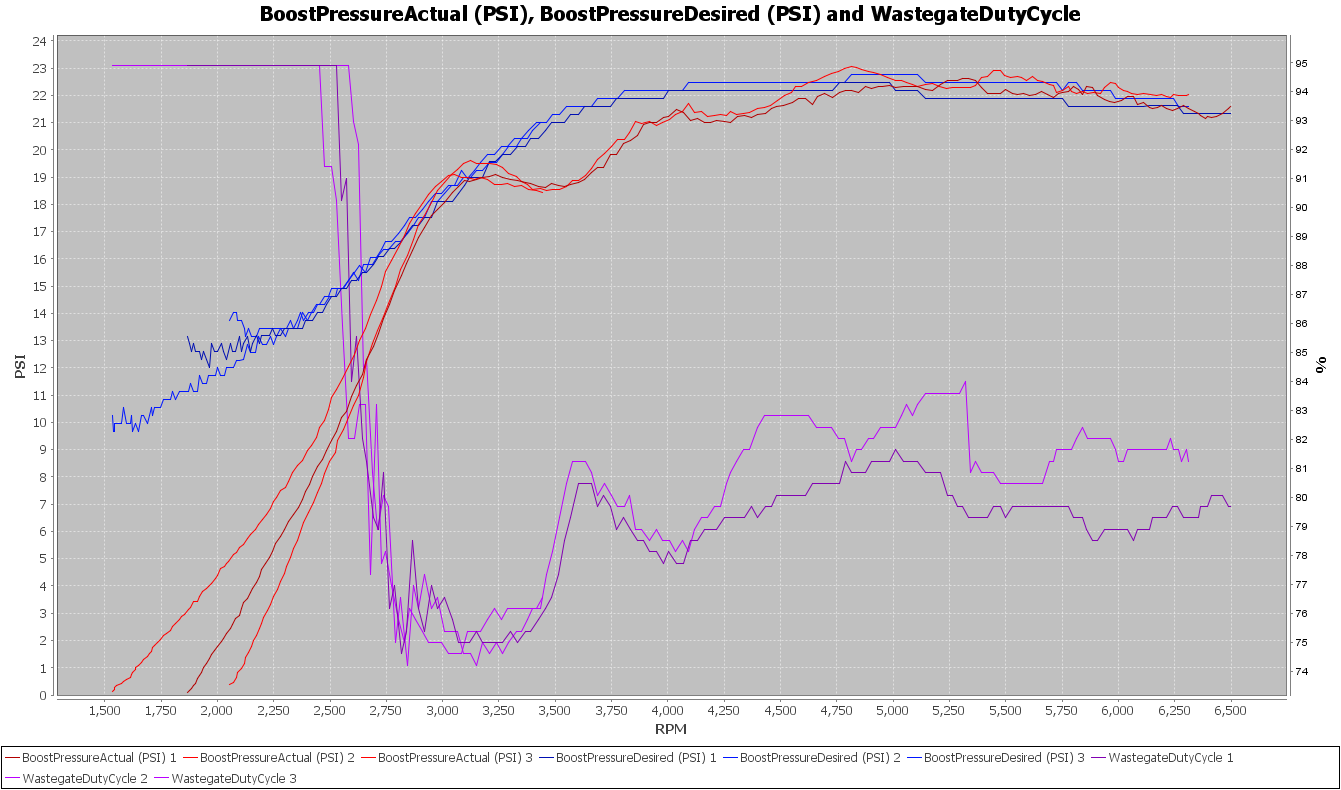Coincident with me installing the White Dog Racing side mount intercoolers a discussion came up concerning the XS Power side mount intercoolers.
The talk returned to the subject of the XS Power intercoolers for the Audi B5 S4 and how well they perform relative to the stock B5 S4 intercoolers. In that discussion a retailer of XS Power products, JAE Innovations, claimed that the XS Power side mounts are significantly better than the stock B5 S4 ICs, that claim from the owner of JAE is quoted below with some clarifying information added in (parenthesis).
“These IC’s (XS Power) are heaps better then OEM, which his article (IC Faceoff – XS Power SMIC ) would leave you to believe otherwise.”
My concluding remarks when writing about the XS Power ICs included the following:
- The design of the XS Power side mount intercooler does not lend to strong temperature reduction or air flow performance.
- Temperature reduction is substantially worse than stock and the airflow is only modestly better than stock.
- The only worthwhile benefit I can see the XS Power side mount providing over the OEM S4 intercooler is that the end tanks are metal and welded onto the core and therefore should withstand higher charge air pressure levels without concern.
So how does this XS Power vendor and auto shop back up their claims? Nothing in the discussion was presented that contradicted my findings and as the product link above shows, JAE provides no data on their product page to support their claim that the XS Power IC is “heaps better than OEM”.
Since “heaps better” fails to address in what respect the XS Power is supposedly much better, nor does it quantify the magnitude of the supposed benefit, I’ll rely on what I consider important performance characteristics of an intercooler to re-evaluate how the XS Power SMIC compares to the stock S4 IC and see if I am convinced that the XS Power side mount is “heaps better”.
Charge Air Cooling
As far as I am concerned the primary reason for having an intercooler, in this case a cross flow heat exchanger, is to reduce the temperature of the air exiting the turbocharger compressor thereby increasing the density of the air entering the combustion chamber. The lower temperature also aids with preventing knock.
The first temperature data I received on the XS Power SMIC came from an owner who had contacted me about flow testing his ICs:
“Hey flyboy,
Would you be interested in flow testing my xs power eBay intercoolers. I’m replacing them with a pair of srm’s. I noticed a huge power loss at high rpms when I went from stage 2+ to stage 3. I thought it was due to a boost leak due to a faulty check valve but that wasn’t the case. I logged my vehicle and noticed a huge increase in intake air temp. I believe it’s the eBay intercoolers causing this issue. Your test will confirm my findings. I can send you my logs if you’d like. I will pay for shipping and any extra cost.
Thanks,”
He sent me a log showing the IAT rise on his Stage 3 car (shown below):

The starting temperature is 90 degrees F and the ending temperature just shy of 6500 rpm is nearly vertical and at 165 degrees F. That is a 75 degree temperature rise over the 3000-6500 rpm pull.
Prior to having this owner contact me a tuner had sent me the following communication and log:
“I feel as though I can trust you. I can’t openly share this because It’ll cause all sorts of problems, but this is a snippet of the new and improved ssac intercoolers.
Please keep it to yourself.”
Note: That message and the log below are now several years old and the fact that the XS Power IC does not cool well has been made widely known by others and should not be a surprise to anyone who bothers to research the product.

In this chart the intake temperatures start out at 86F and by 6500 rpm have risen to 142F, a 56 degree rise. At 7000 rpm the IAT is 152F, concluding a 66 degree rise during the pull.
So how does this compare to the stock S4 intercooler? Finding stock IC data on a Stage 3 setup is complicated by the fact that upgrading ICs when upgrading to larger turbocharges is a smart move and stock IC Stage 3 data is scarce.
I logged a few pulls with my S4 on stock intercoolers when equipped with the FrankenTurbo F4H K04 hybrids, shown below.
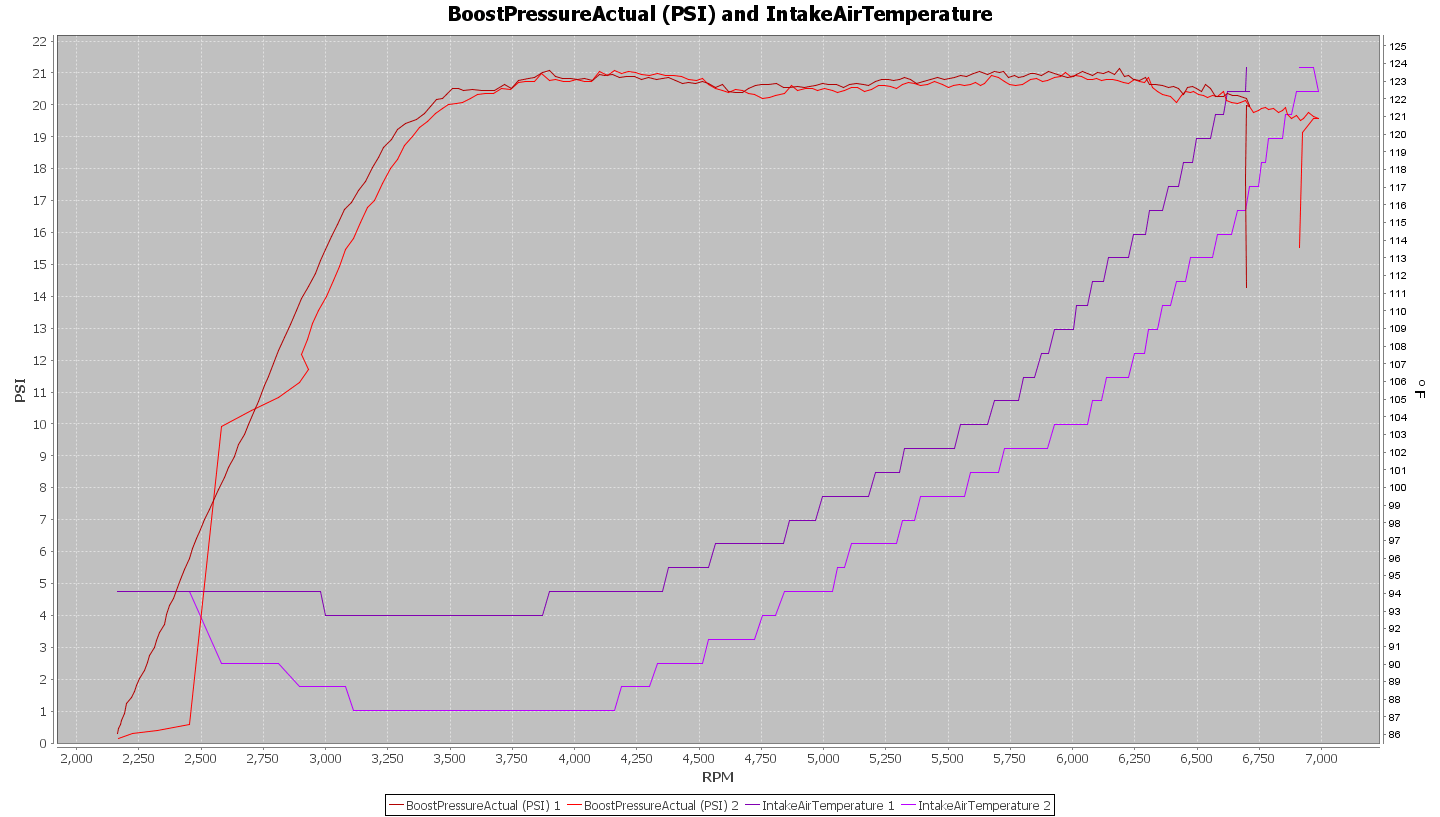
Note that the boost level reached during these pulls is not as great as the charts with the XS Power smics. This goes back to my comment about the benefit of the XS Power smic being that the end tanks are metal and welded and therefore better suited to higher boost applications than what the stock S4 ICs are built for.
With the F4H boosting around 21 psi the stock intercooler shows a temperature rise from about 87 to 113 degrees F on one pull, a 26 degree rise, and on the second temperatures go from 93 to 120 degrees, a 27 degree rise.
These intake air temperature rises would certainly have been higher had I recorded at 22 psi versus the 21 psi that my tune was targeted at. For a ballpark idea of how the two ICs matchup comparing 22 vs 21 psi is not too much of a stretch.
The XS Power showed a temperature rise of 56 degrees and the stock IC a rise of 27 degrees, only 48% of the rise that the XS Power experienced.
In terms of cooling performance over a single pull the stock IC handily outperforms the XS Power intercooler. This cannot be where the JAE claim of the XS Power being “heaps better than OEM” is coming from.
Pressure Drop
An intercooler is going to cause a pressure drop between the air entering the inlet end tank and exiting the outlet end tank. The question is how much and how much relative to the cooling that it provides.
I utilized a flowbench to assess pressure drop across intercoolers on account of the ease of measurement, consistent repeatability, and accuracy of the measurements. Just as a dynamometer should be used to assess deltas rather than absolute values, so should the flowbench.

There is not much to discuss about obtaining the readings of pressure drop, the intercooler is attached to the flow bench and the amount of air that flows through the IC at a pressure drop (depression) of 28″ of H2O is read from a digital manometer.
- The XS Power ICs averaged 164 CFM.
- The stock B5 S4 ICs averaged: 130 CFM.
So is an increase from 130 to 164 CFM “heaps better”?
For some perspective of what “heaps better” could be describing I will add the Silly Rabbit Motorsport IC to the mix.

Going back to my comment about the XS Power intercooler, “…the airflow is only modestly better than stock.” I feel the statement is accurate, the XS Power does flow more than the stock S4 IC, but the difference is not dramatic. The XS Power IC improvement over stock is a mere 17% of the improvement that the SRM IC provides over stock.
How about the guy who provided the logs and ICs for testing when swapping from XS Power to SRM, his thoughts:
“Hey Jeff,
Can’t wait for the results. I gained 4+ psi after switching to the srm’s. Thanks for helping out the b5 s4 community.
Regards”
Now what?
At this point I have hit what I believe are the two most significant aspects of intercooler performance and I do not believe there is any data that justifies calling the XS Power IC “heaps better than OEM”.
In terms of cost the stock IC is free, the car already has them, so even though the XS Power IC is cheap, it is more expensive than a stock intercooler.
I already mentioned the construction but will reiterate that this is a design feature that makes the XS Power IC favorable for higher pressure setups.
Conclusion
After re-evaluating data that I have on the XS Power intercoolers I don’t see any errors in the initial findings that I reported on.
The claim that the XS Power IC is “heaps better than OEM” is vague and absent any data supporting such claim leaves unanswered what the product vendor was referring to.
Have thoughts about this evaluation? Post them below.

